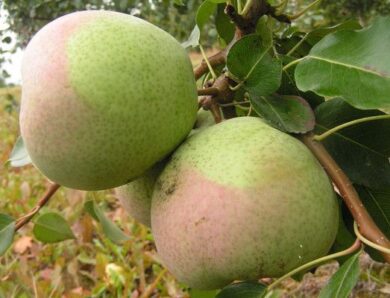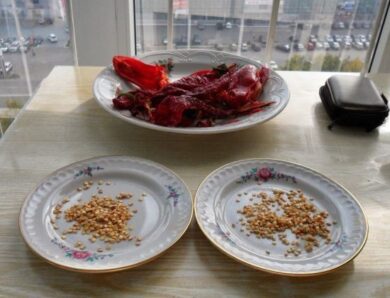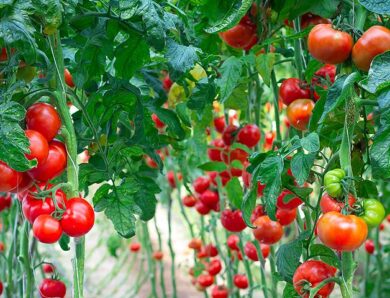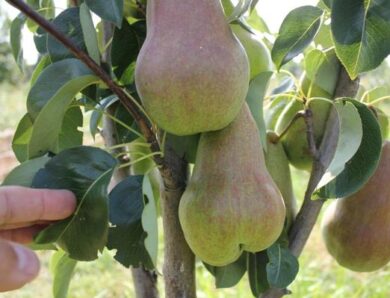Feeding cucumbers during flowering and fruiting
Timely organic and mineral fertilization is a necessary condition for obtaining a full crop of cucumbers. It is necessary to fertilize vegetable crops several times during the season, from seed germination to fruiting. Especially important is the feeding of cucumbers during flowering, because the ovary is formed during this period, and the quantity of a crop depends on this top-dressing.
than to feed
Cucumbers are fertilized with organic and mineral fertilizers, and they can be made comprehensively. Many nutrients are needed to ensure intensive growth and proper development of vegetable crops, but the main are still such trace elements:
- Nitrogen - accelerates plant growth, promotes the formation of shoots, the quantity and quality of leaves depend on it.
- Phosphorus - improves the development of the root system, helps to consolidate the plant in the soil, accelerates flowering.
- Calcium - is involved in cell formation, increases plant immunity.
- Potassium - contributes to the even distribution of nutrients in the plant, which is very important during fruit formation.
No less important for cucumbers are trace elements such as copper, iron, manganese, magnesium.
To provide plants with all the necessary substances, it is better to use complex mineral mixes for top dressing, containing a complete set of components, or, at least, most of them.
Such fertilizers include:
- superphosphate;
- ammonium nitrate;
- nitrophosphate;
- potassium nitrate.
Fans of organics and those, who wants to save money on ready-mixes, can prepare very effective organic fertilizers.
yeast fertilization
Yeast is rich in vitamin composition and protein content. Feeding on their basis makes plants stronger, durable, contribute to the formation of a strong root system, accelerate the development and formation of fruits. Not only yeast can be used in the preparation of yeast fertilizers, but also chicken manure, mown and overgrown plants.
The following recipe is suitable for cucumber fertilizer: on a bucket (8-10 l) water you need to take a small sachet (10 G) dry yeast and a little mown grass. Mix all ingredients and infuse for several hours, then use for watering.
This fertilizer is universal - it can be used to fertilize cucumbers at any time and used not only in the garden, but also in the greenhouse.
Bread feeding
Stale bread is a good alternative to yeast and the successful use of unfit for consumption.
The infusion is prepared very simply: the bucket is one third filled with bread, filled with water to the brim, all this is insisted on some days, until the fermentation process begins. Next, the fertilizer must be filtered, dilute the liquid part with water in proportion 2 l of means on a bucket of water, and use for watering.
feeding with ash
Furnace ash is very useful for cucumbers, as it contains a large amount of iron, phosphorus, copper, magnesium, calcium and other important trace elements. Ash can be used many times throughout the season, and cucumbers will only benefit from this.
To prepare the solution you just need to dilute the ash (1 glass) in a bucket of water, then use for watering. To preserve the green cucumbers effective solution of ash and household soap, which is used for spraying leaves, when they begin to turn yellow and dry.
iodine supplementation
Iodine solution is not only a fertilizer for cucumbers, but also effective protection against disease. You will need it for cooking: 1 bucket of water, 1 l of milk and 30 drops of iodine. All components are mixed and sprayed with a mixture of beds once in 10-14 days.
Feeding whey
This is a very effective way to protect plants from diseases and insects. Pure serum is poured into a spray bottle and used for spraying greens, and also apply fertilizer under the root. For greater efficiency, you can add a few drops of iodine to the serum.
I must say, that folk remedies have some advantages over mineral fertilizers. All these fertilizers, consisting exclusively of organic products, are universal - they can be used at any time of plant life, and their number is not strictly limited. in addition, their use is equally effective, as for cucumbers, grown in the garden, and in the greenhouse.
when to make
For the entire period of growth of cucumbers, from planting seeds to fruiting, cucumber beds need to be fed at least 4 times:
- at the stage of seedling germination, when the plants have 1-2 real leaves;
- during flowering and ovulation;
- during the period of active fruit growth;
- during mass fruiting.
The method of fertilization depends on weather conditions. If the weather is hot, fertilizers are best applied by watering the plants under the roots, if it is gloomy and cool, it is better to spray the plants.
The first feeding is carried out, when the plants reach the stage of the first two true leaves. With proper preparation of seeds and sowing in warm soil it happens, usually, across 1,5-2 weeks after landing, but in the greenhouse, can, and earlier. Solutions are used for top dressing: ammonium nitrate 7-10 G / 10 And water, superphosphate 15 G / 10 And water, and potassium sulfate with the addition of mullein in proportion 8 G / 10 l of water plus 1 l of liquid mullein.
The next feeding is carried out during flowering, about through 2 weeks after the first. Mineral fertilizers containing potassium and phosphorus are applied (superphosphate, potassium salt) with the addition of manganese and boron (these trace elements accelerate the development of plants and prevent the development of diseases). Microfertilizers are added to the mineral mixture in quantities 0,5 g of boric acid and 0,3 g of manganese sulfate.
You can also use a solution of boric acid in concentration to spray the greens 0,5 h. Spoons on a bucket of warm water. Across 2 weeks cucumbers in the garden should be treated with the solution again. For cucumbers, growing in a greenhouse, one treatment with boron and manganese is enough.
During the period of active formation and growth of fruits, cucumbers need the most potassium fertilization, magnesium and a small amount of nitrogen. As soon as the first cucumbers start to appear, plants need to be fed potassium sulfate 30 G / 10 l of water and nitrophosphate 1 Art. a spoon / 1 bucket of water. For garden plants it is better to use a solution of urea 50 G / 10 l of water and ash - these fertilizers will continue to bloom cucumbers.
Another top dressing needs to be done through 1,5-2 weeks, during mass fruiting. Now you need to focus on the condition of plants. If the ovaries are insufficient, urea is used in higher concentrations: 1 liter / 10 And water. If a lot of fruit, they are the right shape and good taste, it will be enough to make a solution of ash, mullein or infusion of fermented herbs.
When growing cucumbers in a polycarbonate greenhouse, fertilizers should be used with caution, not to exceed the dosage. It has to do with that, that in such a greenhouse the plants are at a constant temperature and grow very intensively, which can negatively affect the number of fruits. During active growth to fertilize greenhouse cucumbers, it is better to use nitrogen mixtures containing phosphorus. And when the fruits begin to ripen, emphasis should be placed on potassium fertilizers in the presence of magnesium, manganese and other trace elements.
Video "Folk recipes for fertilizers for cucumbers"
This video is about the types and modes of feeding, necessary for cucumbers in the summer season, as well as popular recipes for organic fertilizers, which are easy to prepare from improvised means.




